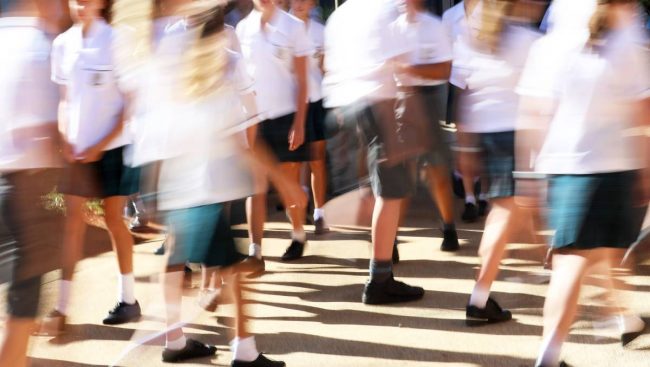Bishops call for renewed emphasis on faith as Australia marks 200 years of Catholic education

Australia‘s Catholic bishops marked the 200th anniversary of Catholic education in the country this week, calling for continued renewal of Catholic education in the country and the primacy of Catholic identity, while also stressing the importance of adequate funding.
In their pastoral letter 200 Years Young, the Australian bishops challenged “all those involved in Catholic education to dedicate themselves to ensuring that our primary and secondary schools … are truly Catholic in their identity and life, are centres of the new evangelisation, enable our students to achieve high levels of Catholic religious literacy and practice, and are led and staffed by people who will contribute to these goals. This will require that, as far as possible, we retain a ‘critical mass’ of Catholic students and staff in our schools.”
They added that among the essential conditions “for a genuinely Catholic school” are that “leaders and staff understand, and are solidly committed to, the Catholic identity of the school” and that “pre-evangelisation, primary proclamation, catechesis and spiritual formation seek to ensure our young people have a personal encounter with Christ, develop an enduring relationship with God and the Church, and have a genuine apprenticeship in the Christian life.”
In addition, it is essential, they said, that students be helped “to integrate faith, culture and life” and that “schools are Eucharistic communities within the parish context where students regularly take part in Mass and Reconciliation and are engaged in various forms of prayer and meditation.”
When Australia was a British colony, the first official Catholic chaplains, Philip Connolly and John Joseph Therry, arrived on the continent in May 1820.
Father Therry established a Catholic school in Parramatta, a city which today is a suburb of Sydney, and it began operations in January 1821. The school was open to all students regardless if they were Catholic, the bishops noted.
The growth of Catholic education in Australia has seen many schools founded to serve the poor now serving the middle class and above.
“While they are no longer all from poorer families, as so many were in the first century-and-a-half of Catholic education, we continue to welcome and ensure our schools are accessible to Aboriginal and Torres Strait Islanders, refugees, those with disabilities and students who are financially disadvantaged.”
“Alongside families and parishes, Catholic schools are the Church’s principal meeting point with young people, and are integral to the Church’s mission of transmitting the faith to the next generation and forming young people as future contributors to Australian society,” Fisher said.
Australia’s Catholic school landscape has since grown to more than 1,750 schools, 770,000 students, and nearly 100,000 staff, they reported.
The growth of Catholic education in Australia has not been without challenges, however, as the bishops acknowledged the findings of the 2017 report of the Royal Commission into Institutional Responses to Child Sexual Abuse, which found serious failings in the protection of children from abuse in a variety of secular and religious institutions, including the Church.
“To our great shame, child sexual abuse reached crisis proportions in the Catholic Church and other institutions in the 1960s to ’80s and was fortunately acknowledged from the 1990s onwards through to the final report of the Royal Commission in 2017,” the bishops wrote.
“This damaged many children and families, as well as the credibility of Church institutions, including schools, in the eyes of many. As these failings have been steadily corrected at a systemic level, the trust of families is being gradually rebuilt.”
The remoteness of many of Australia’s settlements also presented challenges to Catholic education in the country, they noted.
“The COVID-19 pandemic has also presented many difficulties for staff and students, even as they showed great resilience, flexibility and generosity in responding,” they said.
The bishops listed several essential components of successful Catholic education, including a solid religious education curriculum and catechesis, regular Mass attendance in schools, and strong connections to the local parish and Catholic community.
Above all, they said, a school should be “truly Catholic in their identity and life.”
According to the National Catholic Education Commission, about 63 percent of all primary and secondary students in Australia identify as Catholic, a drop from 70 per cent nationwide in 2014, AP Australia reported.
In Australia, Catholic schools receive some 80% of their funding from the government.



Are you going to make any future comment about recent reporting the Catholic Education actually started before 1810 rather than in 1820.